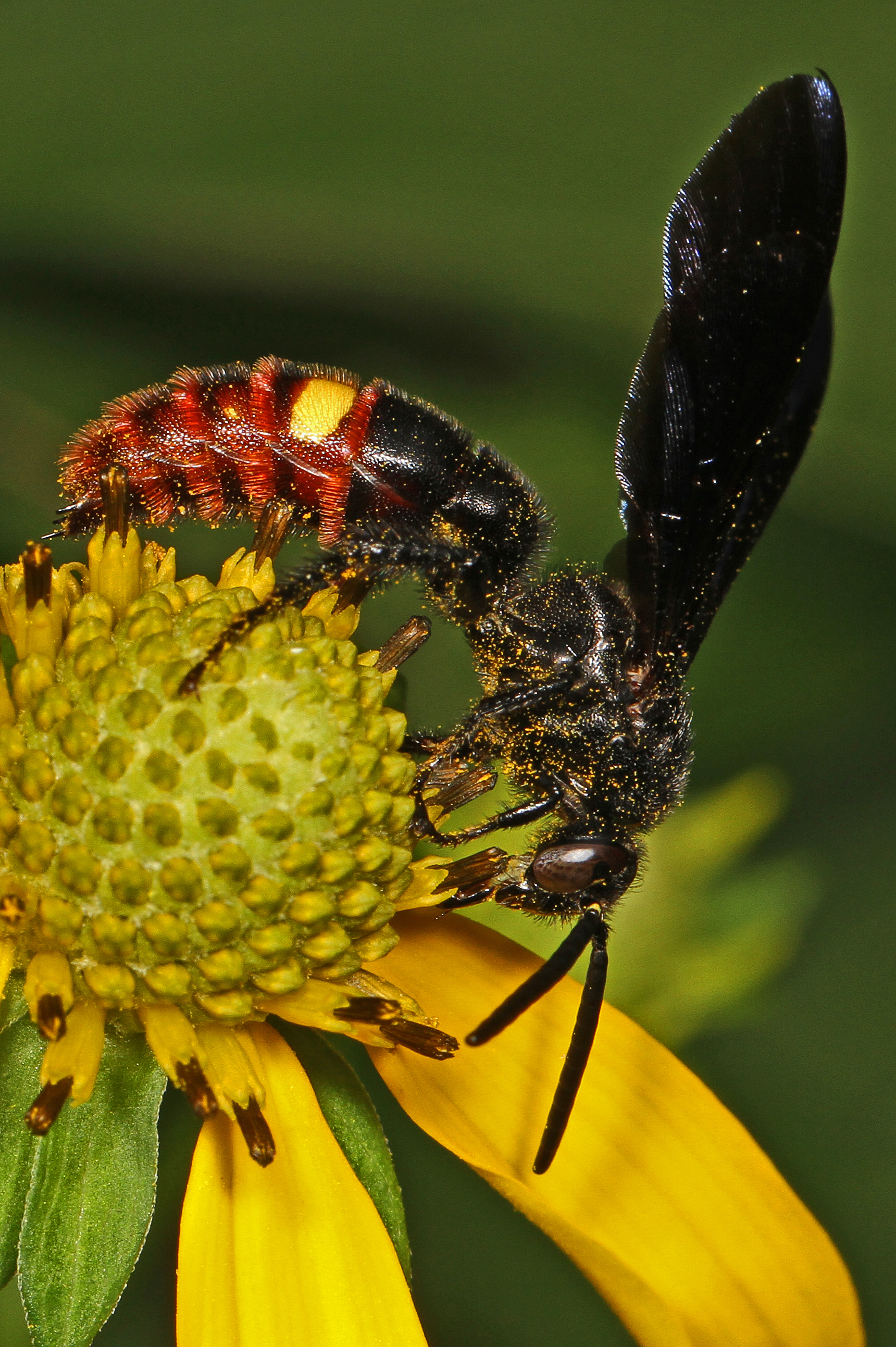Getting involved with the Missouri Bumble Bee Atlas survey this year has turned me into a pollinator super fan and wanna-be entomologist. It quickly became apparent that identifying local bumble bees would not be enough to satisfy my addiction. There were so many non-bumble bee insects on the plants in my yard, and everywhere else I looked. I needed to know more.
I put in a request for the library to purchase two new books that had been favorably reviewed in the New York Times. Any Daniel Boone Regional Library cardholder can suggest a book for purchase, and our acquisitions team does their best to fulfill it.
“Wasps: a Guide for Eastern North America,” and “Bees: an Identification and Native Plant Forage Guide,” by Heather Holm arrived, and went straight to my holds shelf and then home with me. Both these books provide detailed, in-depth information while still remaining accessible to amateur observers. I highly recommend them!

With my new guides in hand I found myself scrutinizing the paper wasps building a nest in the doorway to our front yard. They eyed me with what seemed like menace, while I tried to determine if they had a thin yellow band around the first abdominal segment. Surprisingly, I didn’t get stung, but I don’t recommend this particular mode of observation.
The wasps we are most familiar with, hornets, yellow-jackets and the paper wasps in my doorway, are social wasps, similar in habit to honeybees and ants. In the spring, queen or foundress wasps emerge and get to work constructing a nest, laying eggs and gathering provisions. In many species multiple foundresses may collaborate on one nest. The first eggs are her workers, which take over much or all of the nest building and provisioning, and the queen focuses on laying eggs. As the season progresses, the foundress switches to laying eggs for the next generation of queens and males. The new queens will mate and then focus on feeding to build up internal reserves for the winter. The males mate and hang out for a while but don’t over-winter.
As the summer progresses, the wasps have more invested in their nests and become more protective of the nest. A curious human looming in front of the nest trying to see the patterns on their abdomens is very likely to get stung. If you are concerned about having wasps in your space (at our property they are not allowed to build nests in doorways or eaves close to high-traffic areas) spring is the best time to control them. During spring and early summer, keep an eye on desirable wasp real estate: doorways and overhangs. If you see a nest starting, knock it down before the wasp has a lot invested in that location. Early in the season, it’s easy to catch the nest unattended. Later in the summer be extra cautious if you are entering a building that hasn’t been used, opening the hood on an unused vehicle or getting into some other sheltered area. If social wasps have set up a nest in these unused areas and you disturb them, you’ll likely get stung. They are much more tolerant when they are out foraging, which is a better time to observe and photograph them.

The aggressive social wasps represent a very small portion of wasp species. Most wasps are solitary and not particularly aggressive toward people. The solitary wasps provision their larvae with a prey item such as a spider, caterpillar, beetle grub, bee or fly. Depending on the species, they lay their eggs in a variety of locations: excavated burrow, hollow plant stems, or constructed mud pot. Cuckoo wasps sneak into other wasp nests and lay their eggs on the prey item another wasp collected.
If you can get over the initial fear (and you don’t have a serious allergy to their stings), wasps make for fascinating and accessible nature watching. The females can be found digging holes, scouting for prey or dragging prey victims much larger than themselves back to their nest. The males put on a variety of displays and shenanigans to attract or win females.
A friend of mine, knowing my interest in pollinators, recently sent me a video of a black wasp with an orange rump and two bright yellow spots feeding on a flower. It didn’t take me long to figure out that this was most likely a Scolia dubia or blue-winged wasp. They emerge in late summer once their larval hosts, beetle grubs, are available. This species is (or should be) popular with gardeners because the adults eat nectar from flowers, but they lay their eggs on beetle grubs in the scarab family, including the nonnative Japanese beetle, a voracious eater of almost any plant.
Most of these wasps are beneficial pollinators because the adults feed on flower nectar. Many also help control insects regarded as pests. I’m hoping to get a colony of Stictia carolina or horse guard wasps started at my place. This imposing black and yellow wasp preys on flies, particularly the voracious horse-flies that terrorize horses and any other large, warm-blooded critter this time of year. If successful, maybe next summer I’ll write a post about watching wasps take down the large horse flies that normally menace us every summer.
Image credits: Wasp Colony, Alvesgaspar via Wikimedia Commons (license); Blue-Winged Wasp, Jarekt via Wikimedia Commons (license)


